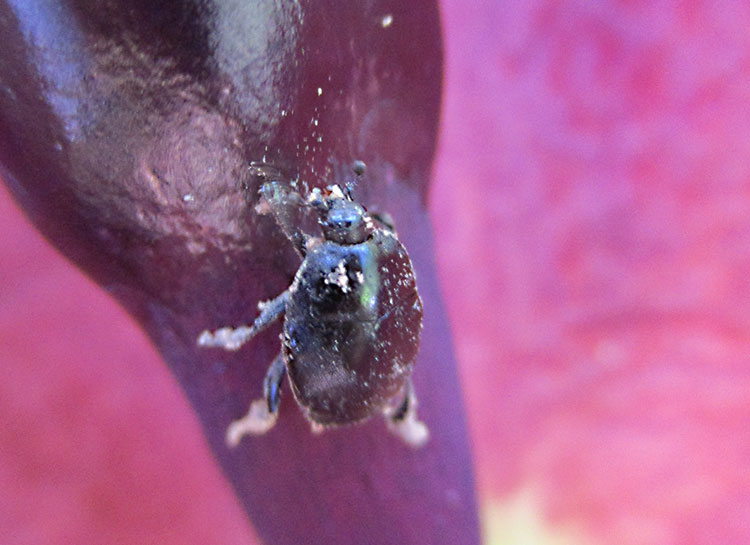By Tony Tomeo
From a human perspective, flowers should not be stinky. They should be pretty and colorful, and perhaps delightfully fragrant. Many flowers in landscapes and home gardens actually are. After all, they are grown for their appealing bloom. Many plants that provide only foliage produce wind pollinated flowers. They are not particularly pretty, colorful or delightfully fragrant, but not stinky either.
Flowers do what they must to pollinate each other. Since they are inanimate, they rely on pollinators or wind to disperse their pollen. Those that rely exclusively on wind produce an abundance of very fine pollen, but waste no effort on attracting pollinators. All other flowers use customized combinations of colors, patterns, textures, fragrances and flavors to attract their preferred pollinators.
There are all sorts of pollinators. Bees are the most famous. There are many other insects too. Hummingbirds and butterflies are very popular. Bats do their work at night while no one is watching. Of all the pollinators though, flies are likely the least popular. Many of the flowers that produce fragrance to attract them are not exactly popular either. Alas, fly pollinated flowers are stinky flowers.
Stinky flowers are naturally uncommon. Apparently, not many flowers want to rely on flies. Stinky flowers are even more uncommon in home gardens and landscapes, for the obvious reason. Paw paw and carob production relies on stinky flowers. A few of the various arums grown for dramatic bloom are stinky too. Philodendron bloom is quite stinky, but very rare among foliar houseplants.
Pear and hawthorn do not rely on flies, so are only incidentally and mildly stinky.
Fortunately, stinky flowers are not often a problem. Paw paw trees are rare here. Carob trees bloom somewhat briefly. If philodendrons bloom at all, they produce only a few flowers which can get pruned off. Regardless, fragrances of stinky flowers are generally not as strong as appealing floral fragrances. They neither disperse as efficiently, nor linger as long. Some are too faint to offend.
•••
Dragon Lily
Dracunculus vulgaris make a sinister impression by botanical name alone. Common names include dragon lily, dragon arum, dragonwort, black dragon, snake lily, stink lily and voodoo lily. That makes it sinister enough to be compelling.
Although rare in nurseries, dormant tubers are available in season by mail order. Alternatively, established colonies happily share a few dormant tubers.
Dragon lily is quite easy to grow. It appreciates rich soil and regular watering, at least until it gets established. Once settled in, it might be satisfied with only monthly watering until it goes dormant in late summer. Because it prefers humid climates, it wants shelter from wind here, and may like a bit of partial afternoon shade. It is so adaptable that it unfortunately naturalized in some regions.
The fragrance of dragon lily attracts insect pollinators that are drawn to dead animals. Those of us who enjoy unusual plants find it amusing. Everyone else thinks it stinks. Blooms that produce the fragrance are spectacular, with a big and flared purplish red spathe around a slender black spadix. They may stand nearly three feet tall, among lightly blotched and deeply lobed palmate leaves.
•••
Horticulturist Tony Tomeo can be contacted at tonytomeo.com.

